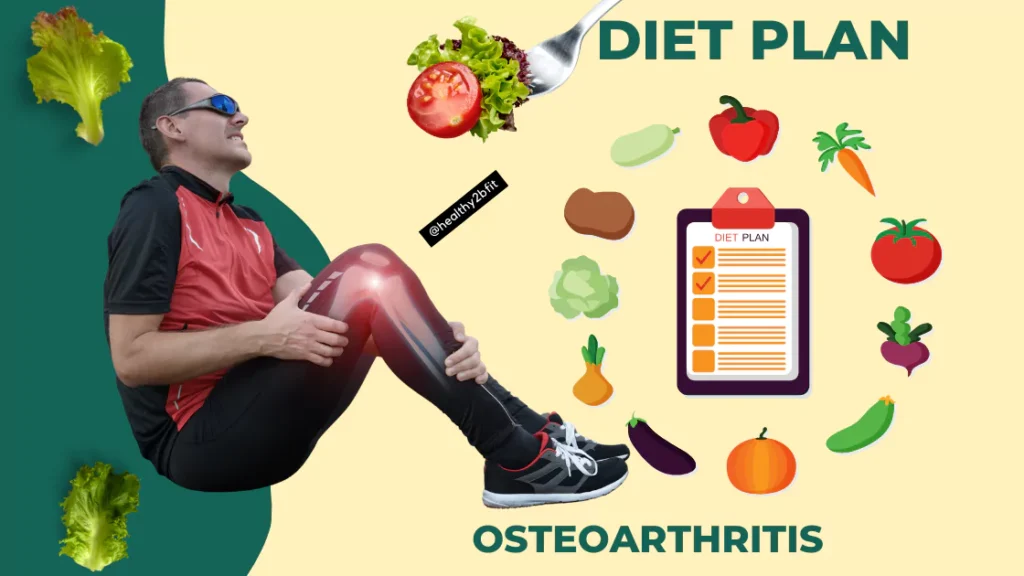Diet Plan for Osteoarthritis
Manage Osteoarthritis with a Tailored Diet Plan!
Optimal Nutrition to Support Joint Health and Reduce Inflammation
Our customized diet plans focus on foods to eat for osteoarthritis and help you improve joint health.
Why Diet Matters in Managing Osteoarthritis
Osteoarthritis can significantly impact your quality of life, causing pain and stiffness in the joints. A well-planned diet helps you manage these symptoms and improve joint function. At Healthy2Bfit, we create osteoarthritis diet plans that focus on reducing inflammation and providing the nutrients necessary for joint health.
Benefits of Our Osteoarthritis Diet Plans

Inflammation Reduction
Includes anti-inflammatory foods to help manage pain and swelling.

Joint Health Support
Focus on nutrients that support cartilage and joint function.

Tailored Plans
Personalized diet charts that fit your lifestyle and dietary preferences.

Expert Guidance
Professional advice from dieticians experienced in managing osteoarthritis.
How Our Osteoarthritis Diet Program Works

Initial Consultation
Discuss your health, dietary habits, and goals with our dieticians.

Customized Diet Plan
Get your diet plan focused on foods that help manage osteoarthritis.

Regular Follow-ups
We provide continuous support and adjust your diet when needed.

Exercise Guidance
Incorporate suitable exercises to improve joint mobility and bone health.
Sample Osteoarthritis Diet Plan
Day 1 Example:
Breakfast : Besan cheela with a side of fresh fruit.
Mid-Morning Snack : A handful of walnuts.
Lunch : Brown rice with mixed vegetable curry and a side of spinach dal.
Evening Snack : A bowl of Greek yogurt with flaxseeds.
Dinner : Grilled fish with quinoa and steamed green beans (Vegetarian option: Grilled tofu with quinoa and steamed green beans).
Note: Each diet plan is customized to meet your specific health needs. Connect with us on Facebook now!

Success Stories from Our Clients

Neeraj Sharma

Roop Matharoo

Rajni Kamboj

Pooja Mahajan

Lakhwinder kaur

Kirti Wandile-Chandankhede

Gurpreet Ghumaan

Daman Bindra
Better Eating, Healthier Joints: Improve Your Diet Today!
Get Your Personalized Diet Plan Now
Trust our experts for personalized nutrition for managing osteoarthritis
Book Appointment Contact UsFrequently Asked Questions
Yes, certain foods do help reduce inflammation and support joint health, which alleviate the symptoms of osteoarthritis.
Absolutely! Our diet plans are personalized to include foods you like while ensuring they support your health needs.
Your diet plan will be reviewed and updated regularly based on your progress and any changes in your condition.
We also provide guidance on exercises that can complement your diet and improve joint mobility.

